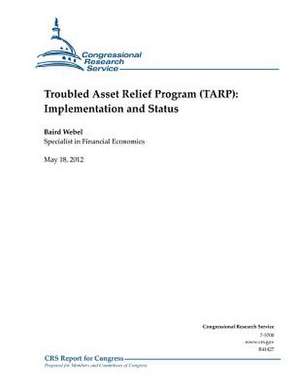Troubled Asset Relief Program (Tarp)
Autor Baird Webelen Limba Engleză Paperback
| Toate formatele și edițiile | Preț | Express |
|---|---|---|
| Paperback (2) | 87.50 lei 3-5 săpt. | |
| CREATESPACE – | 87.50 lei 3-5 săpt. | |
| CREATESPACE – | 99.36 lei 3-5 săpt. |
Preț: 87.50 lei
Nou
Puncte Express: 131
Preț estimativ în valută:
16.74€ • 17.48$ • 13.86£
16.74€ • 17.48$ • 13.86£
Carte disponibilă
Livrare economică 15-29 martie
Preluare comenzi: 021 569.72.76
Specificații
ISBN-13: 9781477650356
ISBN-10: 1477650350
Pagini: 32
Dimensiuni: 216 x 279 x 2 mm
Greutate: 0.1 kg
Editura: CREATESPACE
ISBN-10: 1477650350
Pagini: 32
Dimensiuni: 216 x 279 x 2 mm
Greutate: 0.1 kg
Editura: CREATESPACE
